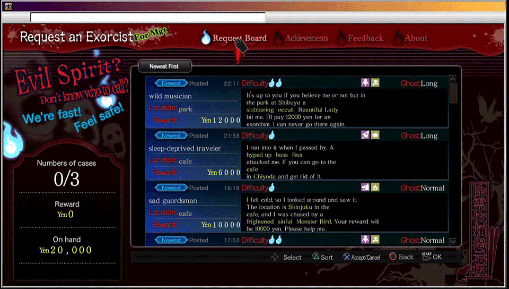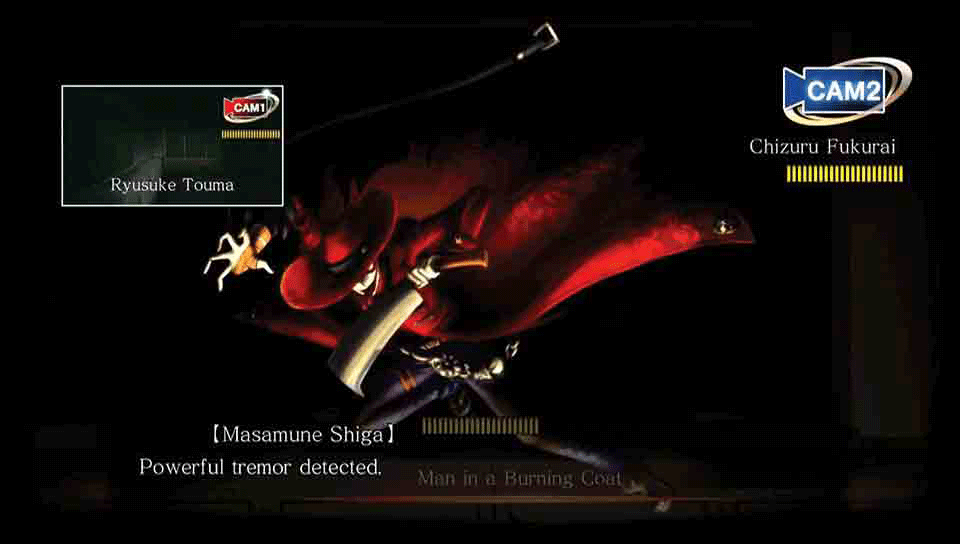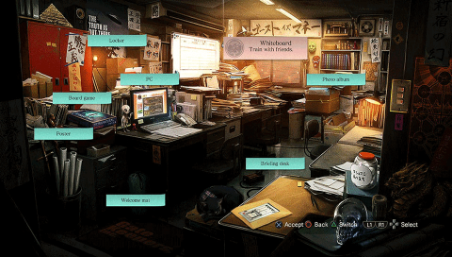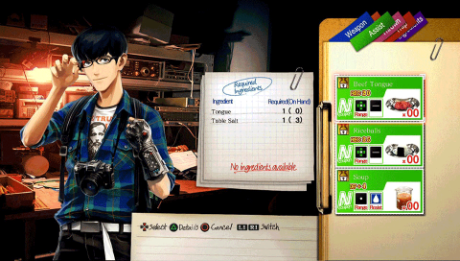Once more I am called upon to review a game that’s title was clearly made in a freak Boggle and Lawnmower accident. Once more into the breach I go. You all read the title so from this point on the game will be referred to as Tokyo Twilight. This is an enhanced port of the original game released in 2014 in Japan, and I did not play the original on the Vita/PS3, so I won’t be able to comment on the quality of the enhancement, but I will be able to comment on the quality of the game itself which I definitely enjoyed… with some significant buts mixed in.

In the first of the long list of “I like it but…” is the games visuals. The game itself can be described as a visual novel (well half visual novel, but we’ll get to that in a moment) so there had best be some damn good eye candy on show. The art is intricate and details with background art that beams with personality. You really get a feel for the locales you visit in this game, which is impressive considering how much the backdrops are left unemphasised. The focus is clearly meant to be on the characters, as they take up center screen. The designs are not what I would describe as ground breaking, in fact they are some of the most generic I’ve seen in a game. The art is fantastic and the gentle animation creates a much greater feeling of fluidity and character to each scene, as opposed to the rigidity that often plagues games of this type. On the flip side from the decidedly average looking main cast, the enemy design is much more creative, even the regular cannon fodder have a particular flair to them.

I suppose that the generic design do fit somewhat, as Tokyo Twilight is desperately trying to pastiche the style of a monster of the week anime. All your cast feels like they are ripped right from a non existing TV Anime, you’ve got you cool know it all guy, you’ve got your initially cold tsundere type, and you’ve even got that one asshole who always pushes his glasses up his nose. The feeling of anime homaging goes even more blatant with the soft rock soundtrack that plays over each scene. And the pseudo cute/cool logo the game is so proud of showing off. Hell it even has an embarrassingly twee OP segment at the end of the first episode (the word twee is meant as more of a compliment than it sounds). Oh sorry, I meant to say “tracks”, the game is segmented into these sections which are all coincidentally named after song titles. So that’s fresh obviously, Anime isn’t known for making references to western music… *wink*.

So it has all the hallmarks of a popular anime that could be airing right, the only thing missing from the equation is a good story. Well that’s not entirely fair, the narrative has the right building blocks in place, they just never actually build anything. You play as the new transfer student into Kurenai Scenery, who quickly discovers that there’s something strange going on at this school. Namely the freak ass questions all your classmates ask. In place of a standard character creation screen you are asked a series of questions from the people you meet. They start of as regular every day queries that quickly escalate to the most granular and personal things, some of which I don’t even know about myself! No for real though who asks you what blood type you are? They make a significant point about this one student who asks you if you believe in Ghosts as though that’s the weirdest thing ever, but its comparatively normal by that point. Of course ghosts do eventually become involved in the plot as your character becomes employed by the local paranormal news paper/ ghost busting agency, who literally beat on ghosts with steel pipes. More effective than you’d think. Its all fun stuff to look at and talk about, but it just doesn’t go anywhere interesting, if you have any familiarity with Japanese story fellow you’ll catch yourself calling out plot details from track 3 onwards.

Now what about that pipe hitting based gameplay I spoke of earlier, and yes, I did say gameplay as this is not wholly a VN. It is also in part a Strategy RPG and, surprisingly enough, its actually pretty robust. The main idea here is that you are predicting the movement of the enemy ghosts. You want to move your allies around the map so that they are in a position where they can deal the most damage While it can feel a little luck based sometimes, working against unpredictable opponents does feel appropriate considering you’re fighting ghosts and all that. It helps that you can also lay traps around the maps to cover your bases, which is a system that was apparently expanded upon in this version of the game. There is an enormous sense of satisfaction when all the dominos line up and fall down perfectly. And outside of combat you are given an (initially) overwhelming amount of stats and skills you can adapt and fine tune to your hearts desire. I only have one gripe with the combat sections of the game and its the bland way each fight is visualized All you really get to look at is a very utilitarian sketch of the area you fight in, and when an attack is launched a brief first person shot (in the style of your found footage horrors) plays as you take a swing at the enemy. Considering you are fighting ghosts, which is inherently exciting, its a little bland.

Out side of combat its not entirely clicking through the dialogue boxes. The player is given random choices in how to proceed but you don’t want to hear about that, you want to know about what I have dubbed the “sniff system”. It probably has a name, but I didn’t look it up and I don’t want to know it!! instead of regular dialogue options you are given two wheels with random symbols to choose from, that are not explained at all. On the first wheel is: a fist, a love heart, a crying eye, a handshake and head with a question mark in it. So the first time this came up I went with the flow and picked the love heart I was then immediately presented with another wheel of icons this time consisting of: an eye, a hand, a nose, an ear and a tongue. So of course I chose the tongue. So I had given out the Love tongue to which the girl on screen had a very perturbed reaction to. I eventually deciphered the meaning of this, the first wheel is what emotion you put in, so for example the first is for anger and the second wheel is how you interact with the world, i.e… using you hand; put them both together and you get a punch. I spent most of the time angrily sniffing, because I found it the funniest interaction with the world, like I was some kind of French aristocrat.

Well then, this is the part where I pass verdict on Tokyo Twilight, which is a lot harder to do than it is on most games. See usually when write my reviews I go score first and then explain how I got there, but in this case I didn’t have a strong numerical value to assign this game. So I started writing in the hopes that a score would reveal itself. In the end, I did enjoy Tokyo Twilight, liked its sense of style and the silly stock characters and the full featured SRPG hiding within. But everything came with a but attached to it, everything I liked, I liked in spite of something else. Its a good game, that’s worth your time if you like novel Japanese concept peices, but just don’t expect to be blown away.









You must be logged in to post a comment.